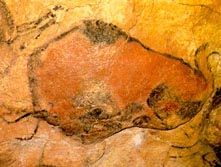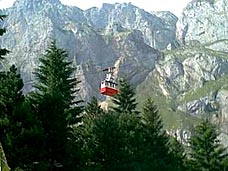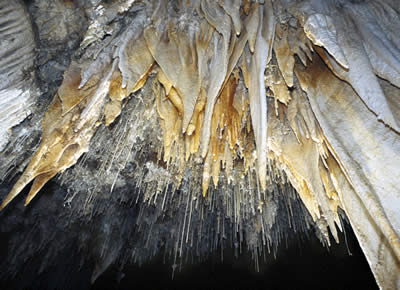 |
Participation
in the Congress will provide an opportunity to
visit Cantabria region, which has a long and
interesting history, dating back to the
Paleolithic period. Located in Santillana
del Mar, the Altamira cave is universally known
for its “polychrome hall”, the roof of which is
decorated with over 30 figures of bison and
other animals that are 14,000 years old. The
original cave is only open to scientists, but a
replica of great perfection exists. As well as
Altamira, the marvels preserved in the caves of
Puente Viesgo, El Pendo or La Gama are also
worthy of note. |
| |
|
|
The omnipresence
of nature is another of the most striking
features of Cantabria. Its personality and
unquestionable beauty are intimately linked with
its spectacular physical geography. Lying as it
does between the mountain and the sea, the
region offers a wide variety of landscapes:
peaks and forest, river valleys, meadows and
mountains, beaches and coastal cliffs with bays,
coves and estuaries.
The Picos de
Europa nature park is one of the most
spectacular mountain ranges in the Iberian
Peninsula. Nature also gave Cantabria some
wonderful beaches. From east to west of the
region are over 70 different beaches, each with
its own personality and character; from inland
beaches protected from bays and coves to those
directly exposed to the crashing waves of the
Cantabria sea. |
 |
|
 |
But Cantabria also offers great beauty
inside. With over 5,000 documented natural
caves, it is internationally renowned as one
of the regions with the greatest speleological
wealth.
The two kilometres of galleries of the Soplao
cave gather an impressive sample of the treasure
nature can develop over thousands of years.
Stalactites and stalagmites, castings, elaborate
crystallisation formations, “nests of pearls” or
pisolites…underground landscapes modelled by
water, chemical reaction and time giving, as a
result, a magnificent beauty.
|
|
The campus of the University of Cantabria,
where
the
conference will take place,
is
situated
near the beach and
surrounded by parks. Conferences and summer
courses have a long
tradition in Santander
dating back to 1933.
A program for accompanying people could be
available. If you are interested in it, contact
with
imse08@afidcongresos.com.
The same for further excursion |